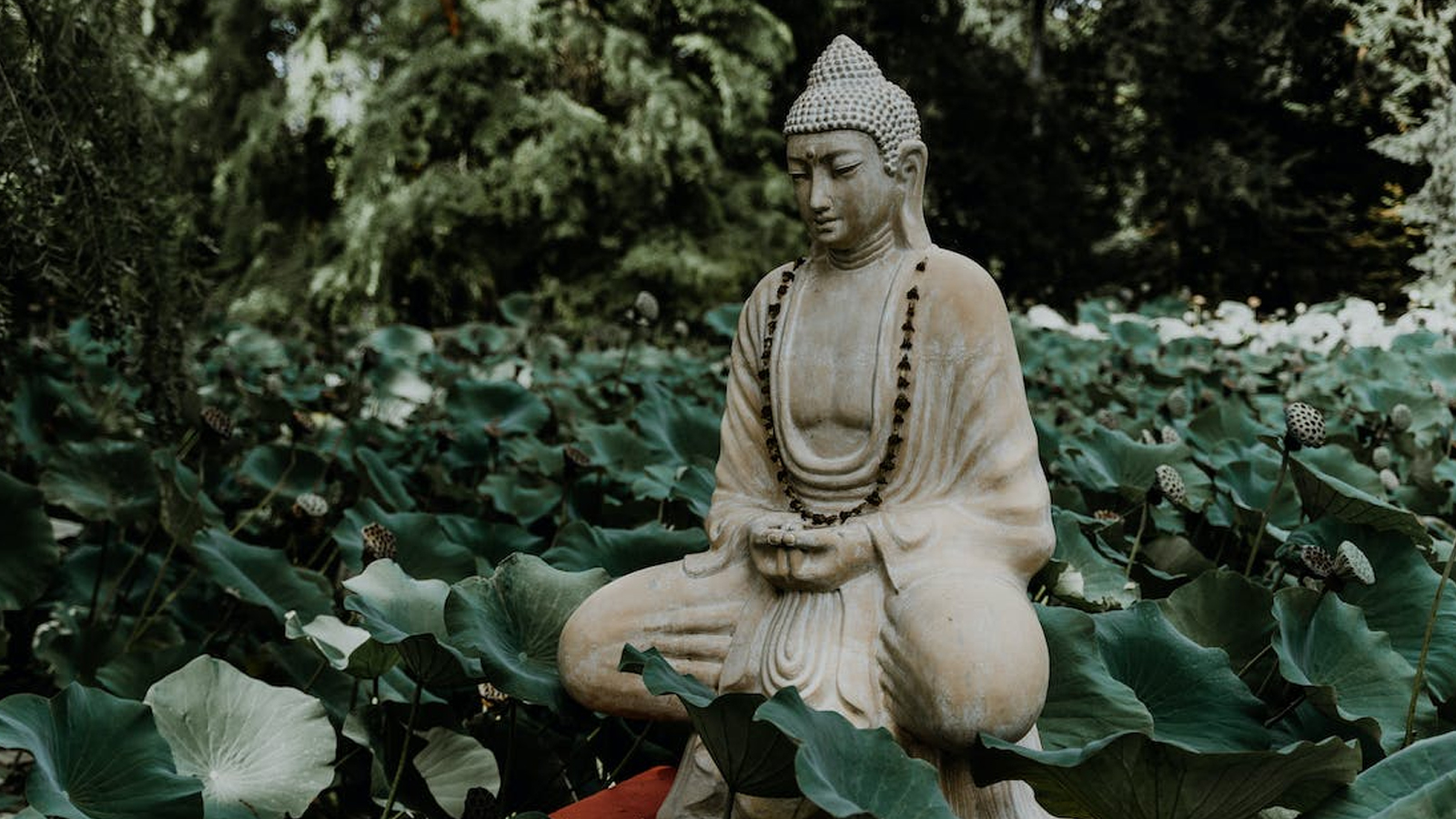Every worldview has to answer three important questions. First, “How did we get here”? This question is foundational to how it is we see the world around us and how we understand our role within that world. Secondly, “How did things get so messed up?” All of us know there is something broken about the world in which we live and our worldview helps us to understand what has been broken. Finally, “How can we fix it?” This final question is the culmination and conclusion of our worldview. We begin with an idea related to how we got here, but ultimately find ourselves answering the most important questions of life. Several years ago, as a pastor of a small congregation focused on Christian Case Making, I asked our leadership team to examine several alternative theistic (and non-theistic) worldviews and compare them to Christianity. One of our elders, Ted Miyake, had a background and interest in Buddhism. I am grateful to him for his help with this article. Buddhism offers answers to the three worldview questions we’ve described here. Let’s examine these answers to see if they are cohesive and relate to the world as we know it.
It’s sometimes difficult to establish a concise and accurate history of Buddhism due to the large number of diverse writings existing on the topic and the lack of reliable “fundamental” historic documents surrounding the faith system, but a few facts can be reasonably understood. Buddhism was founded by a Hindu prince named Siddhãrtha Gautama, also referred to as Sakyamuni (sage of Sakya clan). He was born in northern India (southern Nepal) around 500 B.C., and according to Buddhist traditions, he led a lavish and sheltered life until he witnessed the sufferings of the outside world. He was very troubled by the miseries he observed, and at the age of 29 he gave up his life of indulgence (left his wife, kids, and palace) to seek out the meaning of (and solution for) human suffering.
He tried a number of different techniques in this effort, including severe asceticism (bodily deprivation) and meditation. He ultimately rejected asceticism, and one day at the age of 35 (after many days of meditation and seeking under a Bodhi known as “ficus religious”) he achieved a spiritual breakthrough. He realized certain truths about life, death, reincarnation, karma, and suffering, and his breakthrough included the realization he had rid himself of the spiritual defilements of cravings (including hunger and thirst), desire, hate, and delusion. This aspect of the breakthrough was his awakening or “enlightenment”, and this is why he took the title of Buddha which means “the enlightened one”. He described this freedom from desire as a state of “nothingness” referred to as “nirvana”; the point at which a being is freed from the cycle of life, suffering, death, and reincarnation.
Buddhism flourished as a monastic movement, then faded from India (pushed out by Hinduism and Islam) but spread to Sri Lanka (Ceylon) and throughout Asia. The Buddha’s alleged teachings were not written down until centuries after his death; different councils came together in an attempt to “canonize” Buddhist writings, but even the historicity of various councils is uncertain, so we really don’t have a commonly accepted body of teachings. There are many “sacred writings” claiming to be the teachings of The Buddha or “consistent” with his teachings. Most well-known are the Tripitaka (philosophy, rules, sermons), various Suttras (teachings), and the Tibetan “Book of the Dead” (written by an early Tibetan monk). Various branches and forms of Buddhism have justified their “orthodoxy” based on their own accounts of the councils or their own “inspired” writings. Over time, two major schools (Theravada and Mahayana) emerged as these councils were either accepted or rejected by followers:
Theravada
A branch of Buddhism predominant in Southeast Asia: Thailand, Burma, Cambodia and Laos. Historically, the level of personal commitment and sacrifice required to achieve “nirvana” (or “nibbana”) is very high in this branch of Buddhism. Therefore, the emphasis is on orders of monks and nuns who are the primary practitioners of Buddhism. Monasteries with large monk populations are more common in this branch of Buddhism. Burma (Myanmar), for example, has 500,000 monks.
Mahayana
A branch of Buddhism predominant in Sri Lanka, Japan, Taiwan, China, Korea, Vietnam and Tibet. In this form of Buddhism, the practice of the faith and achievement of “nirvana” is available to everyone, including the common person. Tibetan Buddhism (led by the Dalai Lama) is sometimes considered a separate school but often included under Mahayana Buddhism. Other well-known Mahayana sects include Zen and Nichiren Buddhism (Japan). Nichiren is distinctly “evangelical” seeking to put down other beliefs and win converts.
Buddhism claims 300 to 400 million followers worldwide (although many are merely “cultural” Buddhists). Though it is generally thought of as a religion, it is more a spiritual philosophy. In fact, Buddhist sects range from atheistic to polytheistic, and some forms could more accurately be described as pantheistic (claiming that the “divine” is in all things). Buddhism is extremely diverse and continues to “adapt” perhaps because of the lack of definitive teachings from the Gautama Buddha. In addition to this, the nature of the basic teaching allows for wide range of interpretations and modifications.
How Buddhism Answers the Question:
“How Did We Get Here?” (What’s the Nature of the Creator and Creation?)
Because Buddhism is this diverse, it’s difficult to get a direct answer to this first worldview question. In fact, most Buddhist schools do not directly answer the question, “How did we get here?” at all. That’s because the idea of an absolute Creator God is absent in most forms of Buddhism. Many Buddhists do venerate and worship Gautama Buddha (and other Buddhas – religious leaders – as well), and this veneration and worship does play a major role in both Theravada and Mahayana Buddhism. But while gods, devas, demons, and spirits are common in many early Buddhist stories, they are described in a cynical, sarcastic and mocking way. They are always described as inferior to The Buddha or unnecessary to achieve enlightenment. And while monotheistic religions such as Christianity, Judaism and Islam clearly delineate and separate the nature of God and man, Buddhism makes no clear distinction.
Among the many diverse definitions of the Divine offered by Buddhists, this definition given by Soyen Shaku (a Rinzai Zen Buddhist roshi), provides at least one Buddhist notion about the nature of God:
“At the outset, let me state that Buddhism is not atheistic as the term is ordinarily understood. It has certainly a God, the highest reality and truth, through which and in which this universe exists. However, the followers of Buddhism usually avoid the term God, for it savors so much of Christianity, whose spirit is not always exactly in accord with the Buddhist interpretation of religious experience … To define more exactly the Buddhist notion of the highest being, it may be convenient to borrow the term very happily coined by a modern German scholar, “panentheism”, according to which God is … all and one and more than the totality of existence …. As I mentioned before, Buddhists do not make use of the term God, which characteristically belongs to Christian terminology. An equivalent most commonly used is Dharmakaya … When the Dharmakaya is most concretely conceived it becomes the Buddha, or Tathagata …(Truth Body, or Absolute Reality)”
Buddhism does not directly address the issue of our origin, but it does make several claims about our existence, even if it can’t account for the manner in which we came to exist. Buddhism teaches the material world is not permanent. In fact, we are simply travelers passing through an illusion or misperception of reality. We are caught in a cycle of birth, suffering, death, and rebirth. This cycle is endless for each of us unless we can break out of the cycle by attaining “nirvana”. Buddhism also teaches humans don’t have “souls”; in fact, the Buddhist concept of reincarnation denies the existence of the “self” altogether. The self is merely an illusion; we wrongly identify perception, consciousness, mind and body as “self” when there is actually no such thing. The concept of an abiding entity or “self” is impossible in Buddhism because states of perception, consciousness, and mind are in a constant state of change. According to Buddhism, when the mortal body dies, consciousness and all mental activities cease.
How Buddhism Answers the Question:
“How Did It Get So Messed Up?” (What Separates Man from God?)
When Siddhãrtha Gautama achieved his spiritual breakthrough beneath the Bodhi tree, he came to an important realization concerning the plight of the world and our physical existence within it. He realized particular truths about the world, now known as the Four Noble Truths:
There is suffering in life (or life IS suffering)
Suffering is the result of cravings and desires (or attachment)
Freeing oneself or extinguishing these cravings will end suffering.
The way of achieving freedom (“nirvana”) is by the Eight Fold Path.
The first two truths encapsulate all that is wrong with the world: life is filled with suffering and this suffering is the result of cravings and desires. Buddhism teaches our desires lead us to become “attached” to the very things eventually causing us to suffer. In this regard, “attachment” is at the root of the problem. As we learn to let go of the things to which we are attached (including such base cravings as thirst, hunger and sexual desire), we will be free of the suffering we experience in this life.
Some Mahayana Buddhist variations on this idea related to what’s wrong with the world include the idea denying (or not realizing) the true nature of Buddha, buddha beings, or Buddhist truths can bring about suffering in this life as well. In addition to this, many Buddhists also blame “karma” for any bad luck or difficult situation they may experience in their lives. As an example, a Buddhist might believe he or she is short as the result of making fun of short people in a prior existence.
How Buddhism Answers the Question:
“How Do We Fix It?” (How Can We Be Restored to the Divine?)
So, how does a Buddhist address the suffering existing in the world? The answers and solutions are to be found in the second two statements of the Four Noble Truths; we can end suffering and experience a spiritual restoration if we can simply free ourselves from our cravings by employing the “Eight Fold Path”:
“Now this … is the noble truth of the cessation of suffering: it is the remainderless fading away and cessation of that same craving, the giving up and relinquishing of it, freedom from it, nonreliance on it.” (Dhammacakkappavattana Sutta [Samyutta Nikaya 56.11], trans. Bodhi (2000), pp. 1843-47)
The Buddhist must rely on his or her own self effort in order to practice the Eight Fold Path. Most contemporary Buddhists understand the Path as a series of correct understandings and behaviors:
Related to “Wisdom” (Prajñā or Paññā)
These first two elements of the Eight Fold Path provide the rational foundation for understanding reality from a Buddhist perspective:
Right View
Buddhists understand this as “perspective”, “vision” or “understanding”; it is the ability to understand the real way the world works; the ability to understand reality from a Buddhist perspective, including the reality of Karma and suffering.
Right Intention
This aspect of the Path is concerned with the “resolve”, “aspirations” or “will” of the believer. It describes the need for the believer to rid him or herself of any desire to do anything harmful or immoral.
Related to “Ethics” (Śīla or Sīla)
Buddhists don’t want their outward actions to defile their minds and their ability to concentrate. For this reason, certain ethical efforts are part of the Path:
Right Speech
Buddhism calls it believers to be careful about the words they use. This aspect of the Eight Fold Path prohibits lying, speaking abusively, or using harsh language.
Right Action
This aspect of the Path encourages the Buddhist to train oneself so that he or she is able to act in a morally upright manner, not corrupting or harming others.
Right Livelihood
The Eight Fold Path also calls Buddhists to seek employment in a trade or occupation that will not harm other living beings, either directly or indirectly.
Related to “Concentration” (Samādhi)
Finally, Buddhism teaches believers must train their higher consciousness in order to create a framework of calm collectedness from which reality can be truly experienced and understood. For this reason, the remaining aspects of the Path are focused on areas of “concentration”:
Right Effort
The Path calls Buddhists to make a continuing effort to rid oneself of all thought words or actions harmful to either themselves or others in their world. Buddhists are called to make a continuing positive moral effort.
Right Mindfulness
In addition, Buddhists are called to stay alert mentally; remaining constantly on guard to those influences in their world affecting their body and mind. This aspect of the Path calls the believer to be ever mindful and deliberate about saying and doing what is morally right.
Right Concentration
Finally, the Path calls the Buddhist to engage in the practice of proper concentration, accomplished through meditation, in order to enter into what is known as “jhana” (a state of consciousness that allows the believer to develop wisdom and insight into the true nature of the world around them).
The goal of the Eight Fold Path is to understand the nature of life, better comprehend the Four Noble Truths, and to eventually extinguish our “self” and our cravings (good or bad) so we can ultimately achieve “nirvana” (the state of nothingness, non-consciousness or “bliss”). The Eightfold Path is sometimes called the “Middle Way” since it is neither extreme asceticism nor a life of indulgence. But in all of these elements of the Eight Fold Path, it is clear the individual believer is charged with responsibility for his or her own spiritual growth or development. Buddhists find the answer within their own effort, and this self-effort is valued in Buddhism. Unlike other faith systems calling upon God for assistance, this idea of trusting something or someone other than yourself is foreign to Buddhism.
Buddhism teaches some of us may, in fact, achieve “nirvana”. Buddhism proposes our world does contain individuals who have attained enlightenment (buddhas and boddisatvas) but have chosen to remain with us in the conscious illusion to assist us in our own spiritual progression. Every worldview has to be both internally and externally consistent. If you’ve got a friend who is interested in Buddhism, there are several important philosophical questions and Biblical distinctions you might want to explore. Share on X
Every worldview has to be both internally and externally consistent. If you’ve got a friend who is interested in Buddhism, there are several important philosophical questions and Biblical distinctions you might want to explore as you discuss your beliefs. Buddhism is clearly incompatible with the Christian worldview, and as our culture embraces pluralism and tries to find similarities between every view of the world, there are a few questions and distinctions we can raise to help clarify and highlight the differences between Buddhism and Christianity.
J. Warner Wallace is a Dateline featured cold-case homicide detective, popular national speaker and best-selling author. He continues to consult on cold-case investigations while serving as a Senior Fellow at the Colson Center for Christian Worldview. He is also an Adj. Professor of Christian Apologetics at Talbot School of Theology, Biola University, and a faculty member at Summit Ministries. He holds a BA in Design (from CSULB), an MA in Architecture (from UCLA), and an MA in Theological Studies (from Gateway Seminary).
































